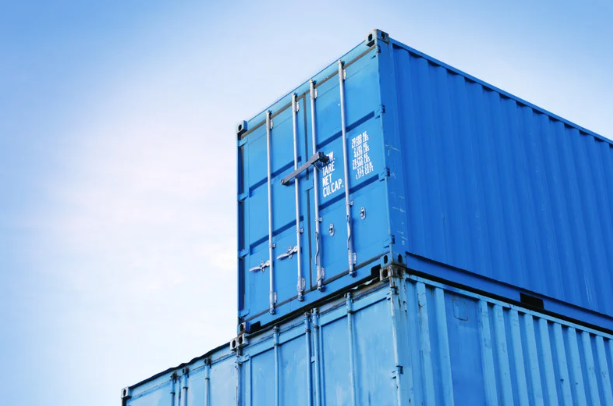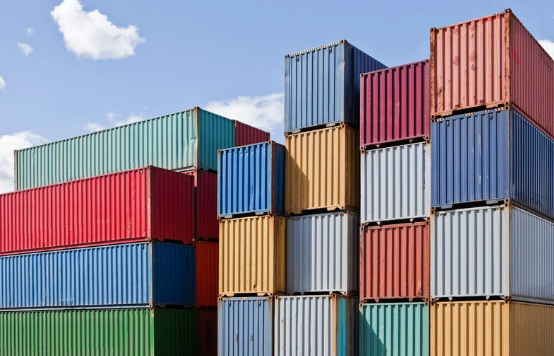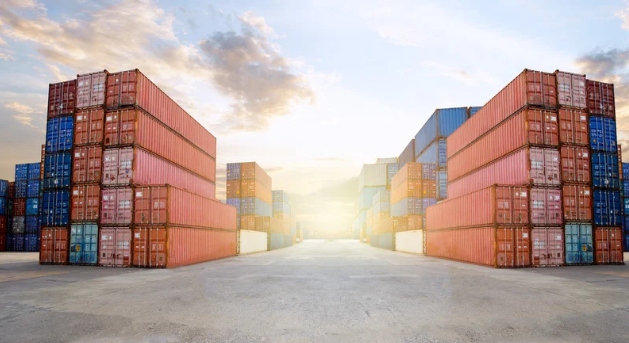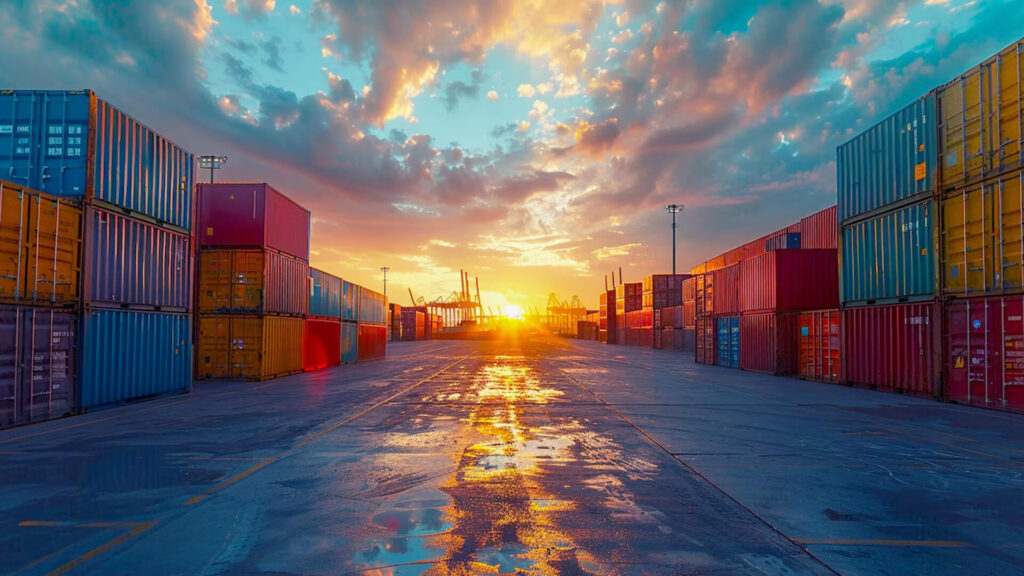Learn About Container Shipping in Canada
In 2025, container shipping in Canada has become a cornerstone of efficient logistics. With businesses aiming to cut costs, reduce delays, and ensure safe delivery, understanding how container shipping in Canada works is more crucial than ever. Whether you’re a small business owner or a national distributor, container shipping in Canada can offer the reliability and scalability you need. By mastering the key elements of container shipping in Canada, you’ll enhance your operations, improve customer satisfaction, and stay competitive in the evolving freight landscape.
Container shipping in Canada is more than just loading goods into a box. It involves proper planning, choosing the right containers, completing essential paperwork, and ensuring compliance with national transportation regulations. If you’re shipping within Canadian borders, following these container shipping in Canada best practices will keep your goods safe, your clients happy, and your operations running smoothly.
Let’s explore the best tips, container types, required paperwork, and the risks of overlooking this powerful freight solution. With container shipping in Canada, your business is set to grow stronger in 2025.

What is Container Shipping?
Container shipping refers to the standardized method of transporting goods using steel containers—typically 20 or 40 feet in length—that are designed for intermodal use across trucks, trains, and ships. This modern logistics solution allows cargo to move efficiently across long distances without the need to unload and reload goods at each stage.
In the context of container shipping in Canada, this method plays a crucial role in supporting both domestic distribution and international trade. Given Canada’s expansive geography, diverse terrain, and extreme climate conditions, container shipping provides a resilient and scalable logistics backbone for businesses of all sizes.
One of the primary advantages of container shipping in Canada is reduced cargo handling. Goods are packed once and sealed until final delivery, minimizing the risk of theft, damage, or contamination. This is particularly beneficial for temperature-sensitive products, high-value electronics, automotive parts, or machinery.
Another major benefit is operational efficiency. The modularity of containers allows for optimized loading and unloading, faster transfers between transport modes, and improved space utilization in warehouses and on transport units. In container shipping, this translates into lower labor costs, faster turnaround times, and better supply chain reliability.
Shipping containers used in Canada are engineered to handle the country’s unique challenges—including harsh winters, coastal humidity, and rugged transit routes. Whether you’re transporting goods through the Rocky Mountains by rail or shipping through the Port of Vancouver, the durability, insulation, and security features of containers make them the ideal choice.
From eCommerce distributors and manufacturers to agricultural exporters and mining companies, Canadian businesses rely on container shipping to maintain continuity, reduce freight costs, and meet growing customer expectations.
Ultimately, understanding how container shipping works—and how it integrates into Canada’s logistics ecosystem—empowers companies to make smarter, more strategic decisions when it comes to freight. Whether you’re shipping regionally, cross-border into the U.S., or overseas, container shipping in Canada provides the consistency, protection, and cost control modern businesses demand.
Container Shipping in Canada
Canada is a major player in the world of container shipping. According to statistics from 2008 to – 2022, the country saw a massive volume of container traffic exceeding 7 million TEU (Twenty-foot Equivalent Units). This impressive number reflects a steady increase from previous years.
To handle this growing demand, Canada’s main ports are undergoing significant upgrades. Major shipping hubs like the Port of Montreal and the Port of Vancouver are expanding their rail and terminal capacities, with a goal to streamline the ocean freight industry.
Furthermore, inland ports like the Port of Toronto are flourishing too. As this central location allows efficient distribution of goods to a large portion of Canada’s population.
These ongoing infrastructure improvements position Canada’s shipping industry for even greater success. And by further expanding in capacity and fostering flexibility, Canada is ensuring a smoother and more efficient container shipping for years to come.
Types of Shipping Containers
Container shipping in Canada relies on various container types tailored to different types of cargo. The most common options include standard dry containers, refrigerated containers, and open-top containers.
Dry containers are the backbone of container shipping in Canada, perfect for most general cargo. For perishable goods, refrigerated (or reefer) containers maintain consistent temperatures throughout the journey.
Open-top and flat-rack containers are ideal for oversized or irregular loads. These specialty containers in container shipping in Canada provide flexibility for transporting heavy machinery, vehicles, or equipment.
Choosing the right type of container shipping in Canada ensures your goods are transported safely and efficiently. Matching your cargo with the correct container helps avoid delays, damage, and regulatory issues.
Less Than Container Load (LCL)
- Cost-effective: Ideal for smaller shipments where you only need a portion of the container. You only pay for the space you use.
- Slower transit times: You’ll share the container with other shippers, so your shipment might wait for others to fill the space before it departs.
- Good for: Businesses shipping non-bulky items who prioritize affordability over speed.
Full Container Load (FCL)
- Faster: You rent the entire container, so there’s no waiting for other shipments.
- More expensive: You pay for the entire container, even if you don’t fill it.
- Greater control: You can manage loading and choose the best shipping route for your needs.
Good for: Businesses who prioritize quick delivery for larger shipments or who are willing to pay for the convenience of a dedicated container.
Manufacturers and distributors need to find the right balance between cost-effectiveness and timely delivery, both critical aspects of their business. LCL offers affordability, while FCL provides speed and control. The best option depends on your specific needs and priorities.

Standardized Shipping Containers
Standardization is one of the main benefits of container shipping in Canada. Using ISO-standard containers ensures compatibility with all major ports, railways, and trucking networks.
Container shipping in Canada benefits from consistent sizes, load capacities, and locking mechanisms that simplify handling and tracking. Standard containers come in 20-foot and 40-foot versions, offering flexibility based on shipment size.
These containers are widely accepted across industries, enabling container shipping in Canada to integrate with global supply chains seamlessly. They also promote sustainability by reducing empty hauls and optimizing space.
For companies looking to scale, standardized container shipping in Canada allows for more predictable shipping timelines and simplified logistics processes.
Here’s a breakdown of the most common ones:
- 20 feet (6.09 meters): This is the most common size and the basis for measuring container capacity (TEU). Think of it as the building block!
- 40 feet (12.18 meters): This size offers double the space of a 20-foot container.
- 45 feet (14.6 meters): While less common, these containers offer even more space for larger shipments.
There are also some container sizes mainly used in North America for rail and truck transport:
- 48 feet (14.63 meters)
- 53 feet (16.15 meters): Introduced by Canadian Tire in 1994.
- 60 feet (18.29 meters): The newest and longest container, again pioneered by Canadian Tire in 2017.
But size isn’t everything! Containers also come in different styles to suit specific cargo needs:
- Dry cargo: This is the basic “box” container for all your general shipping needs.
- Flat rack: Ideal for oversized or oddly shaped cargo like barrels or machinery.
- Refrigerated: Keeps your fresh foods and other perishables cool during transport.
- Tank: Designed to safely transport liquids, gasses, and even powders.
- Garmentainer: Features built-in clothing racks for hanging garments during shipping.
- Open-top: Perfect for bulky items that wouldn’t fit in a standard container.
So, the next time you see a giant container ship, remember, it’s not just a bunch of identical boxes! Each container is carefully chosen based on the specific cargo it carries, ensuring a safe and efficient journey across continents.
Note – For more in-depth Standard Shipping Container info you can read this blog.
So Which Container Should You Pick?
Choosing the right container is crucial to the success of container shipping in Canada. Consider your cargo type, size, weight, and environmental sensitivity.
For general goods, dry containers are the most versatile. If you ship temperature-sensitive items, opt for refrigerated units for effective container shipping in Canada.
Hazardous materials or liquid bulk may require tank containers, which are also available for container shipping in Canada. Always consult industry standards and safety guidelines when choosing containers.
Picking the appropriate container for container shipping in Canada helps avoid overcharges, reduces cargo damage, and supports regulatory compliance.
For Large Shipments (over 15 Cubic Meter) :
Full Container Load (FCL)
For large shipments exceeding 15 cubic meters (CBM), Full Container Load (FCL) is the ideal option. This ensures your goods are delivered efficiently and on time. Since you have the entire container to yourself, there’s no need for multiple shipments.
Choosing Your Container Size (Importers):
Importers have a variety of container sizes to choose from, depending on their cargo volume. Options include standard 20-foot dry containers or even larger 45-foot high cube containers.
For Smaller Shipments:
Less Than Container Load (LCL)
LCL shipping might be more suitable for smaller, non-urgent shipments. However, it’s not ideal for perishable, fragile, or valuable items due to the increased risk of damage or delays. In these cases, FCL is the safer option.
Oversized Cargo:
For cargo that’s too large or bulky to fit even a 40-foot container, a special shipping method called “breakbulk” is used. In breakbulk shipping, each item is packaged and shipped individually.
Proper Container Shipping Paperwork
Accurate documentation is essential for smooth container shipping in Canada. This includes the bill of lading, packing list, commercial invoice, and customs declarations.
For domestic container shipping in Canada, paperwork must comply with federal and provincial transport rules. Errors or omissions can lead to costly delays and fines.
Shipping companies also require proper labeling and documentation for special cargo like hazardous materials or temperature-controlled goods. Ensure your paperwork aligns with container shipping in Canada standards.
Maintaining detailed, accurate records ensures compliance and transparency. It also protects your business from disputes or insurance claims related to container shipping in Canada.
Essential Documents:
- Commercial Invoice:
This document details the transaction between the buyer (importer) and the seller (exporter), including product descriptions, quantities, and values.
- Bill of Lading:
Acts as a receipt for your shipment, proving ownership and outlining the transport details.
- Letter of Credit (optional):
A financial guarantee issued by the importer’s bank, assuring payment to the exporter upon meeting specific conditions.
- Customs Authorization:
Grants permission for the importer to clear goods through Canadian customs.
- Certificate of Origin:
Verifies where your goods were produced, potentially impacting import duties.
- Packing List:
Provides a detailed breakdown of the contents within your container.
LCL Shipments (Less Than Container Load):
If you’re using LCL shipping, where your goods share a container with others, your shipment might be consolidated at a designated location before you can pick it up. Alternatively, you might need to wait for it to arrive at a specific pick-up point.
Benefits of Container Shipping in Canada
- Cost savings through bulk transport
- Reduced cargo damage due to container protection
- Seamless integration with intermodal services
- Greater cargo security and tracking
- Flexible container types to match cargo
- Standardization for simplified logistics
Embracing container shipping in Canada helps businesses become more agile, scalable, and customer-focused.
Risks of Not Using Container Shipping
- Higher costs due to inefficient freight handling
- Increased cargo damage or loss
- Incompatibility with intermodal services
- Difficulty scaling freight operations
- Less visibility into shipping status
Neglecting container shipping in Canada can result in delays, profit loss, and dissatisfied customers.
Conclusion
Container shipping in Canada is not just a trend – it’s a proven logistics strategy that supports cost savings, cargo safety, and operational efficiency. As we move into 2025, optimizing your approach to container shipping in Canada will help you meet customer expectations, scale your business, and stay ahead of the competition.
Every business can benefit from understanding and applying the core principles of container shipping in Canada. Whether you’re handling small-volume shipments or large industrial loads, container shipping in Canada provides the tools and flexibility you need.
By leveraging best practices, choosing the right containers, and ensuring accurate documentation, you’ll future-proof your freight operations. Don’t wait – enhance your logistics strategy with container shipping in Canada today.

FAQ
What Is The Most Common Shipping Container?
Dry containers are the most widely used type in container shipping. They’re the go-to option for transporting a vast range of everyday cargo, making them the true workhorses of the industry.
How to calculate the CBM for Containers?
Cubic meters (CBM) is a vital measurement in container shipping. It represents the volume (length x width x height) of your cargo, essentially the space it occupies.
For instance, a package measuring 2.5 meters long, 1.6 meters wide, and 2.2 meters high would have a volume of 8.8 cubic meters (CBM) calculated as:
CBM = 2.5m x 1.6m x 2.2m = 8.8m³
What is container shipping in Canada?
Container shipping in Canada refers to the use of standardized containers to transport goods securely and efficiently across provinces. It ensures reliable, cost-effective logistics by minimizing cargo handling and protecting freight from environmental conditions.
Why is container shipping in Canada cost-effective?
Container shipping in Canada reduces the need for repackaging, minimizes damage, and enables bulk shipping. These advantages translate to lower overall costs for businesses compared to traditional freight methods.
Which types of containers are available in Canada?
In Canada, businesses can choose from dry containers, refrigerated (reefer) containers, open-top containers, and flat-rack containers, depending on the nature and size of the cargo.
How do I choose the best container for my shipment?
Select your container based on cargo dimensions, weight, and sensitivity to temperature. Dry containers are suitable for most goods, while perishable items require refrigerated units. Oversized cargo may need open-top or flat-rack containers.
What paperwork is required in Canada?
Essential documents include the bill of lading, commercial invoice, packing list, and customs declarations. Accurate paperwork ensures compliance with federal and provincial transport regulations.
Is container shipping in Canada suitable for temperature-sensitive goods?
Yes, refrigerated containers (reefers) maintain controlled environments, making them ideal for shipping perishable items like produce, pharmaceuticals, and frozen foods.
Can I use containers in Canada for intermodal transport?
Absolutely. Container shipping in Canada integrates seamlessly with intermodal transport, allowing goods to move efficiently by road, rail, and occasionally sea without unloading.
What are the environmental benefits of containers in Canada?
It supports sustainability by reducing greenhouse gas emissions through efficient cargo handling and integration with rail transport, which has a lower carbon footprint.
How do I avoid damage during shipping in Canada?
Proper packaging, selecting the right container type, and securing the cargo inside the container are crucial steps to prevent damage during transit.
Are there insurance options for container shipping in Canada?
Yes, various insurance options cover damage, loss, or delays. Businesses should secure comprehensive coverage to protect high-value or sensitive shipments.
What should I avoid when preparing for container shipping in Canada?
Avoid incorrect documentation, overloading containers, and using unsuitable container types. These mistakes can cause delays, penalties, or cargo damage.
How does container shipping in Canada compare to other freight methods?
It offers better security, scalability, and cost-efficiency than many traditional methods. Container shipping in Canada is also more adaptable to multimodal logistics strategies.
Additional Resources
https://transportgeography.org/contents/methods/intermodal-transport
https://tc.canada.ca/en/policy/transportation-policy/freight-rail-intermodal-policy
https://www.cscmp.org/CSCMP/Educate/SCM_Definitions_and_Glossary_of_Terms.aspx
https://www.unece.org/trans/main/wp24/wp24fdoc/Container_Standards.html
https://www.iso.org/standard/80491.html
https://www.statcan.gc.ca/en/subjects-start/transport
https://www.bts.gov/freight-transportation
https://www.itf-oecd.org/intermodal-logistics
https://publications.gc.ca/collections/collection_2022/tc/T22-234-2021-eng.pdf
https://www.nrcan.gc.ca/science-and-data/environmental-indicators/greenhouse-gas-emissions/10781
https://www.logisticsmgmt.com/topic/category/container_logistics
How We Can Help
For businesses looking to optimize their freight shipping with reliable, efficient, and cost-effective solutions, RailGateway.ca is your trusted partner in intermodal logistics. Whether you’re new to freight trains or want to enhance your existing supply chain, our team of intermodal experts is ready to guide you every step of the way.
Contact RailGateway.ca today for a free quote or to speak directly with one of our experienced intermodal specialists. Let us help you unlock smarter, smoother shipping solutions tailored to your unique needs.
Visit RailGateway.ca or call us to get started on transforming your freight shipping strategy in 2025 and beyond.





